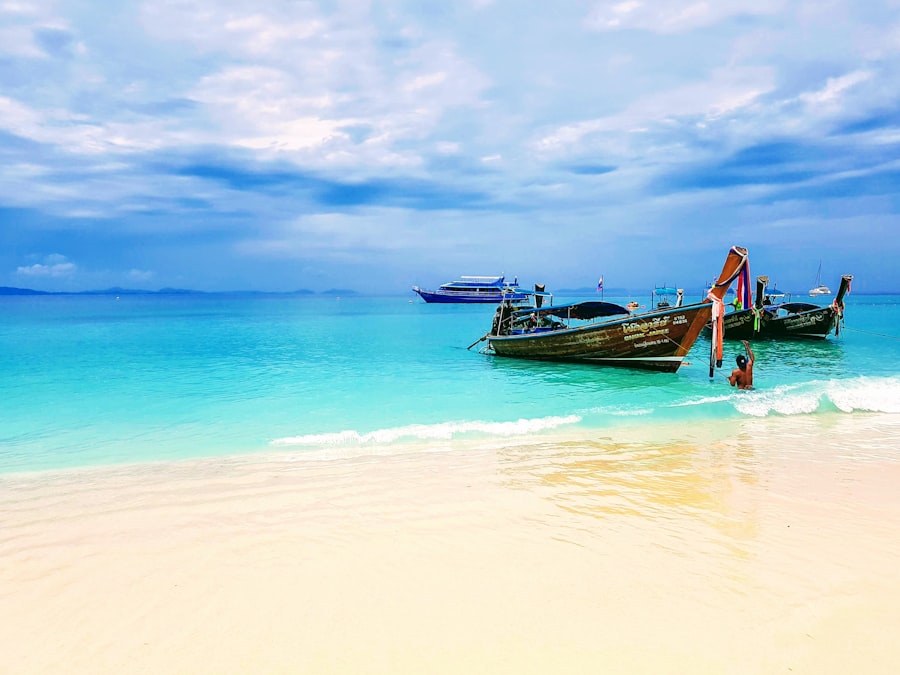Thailand, a nation steeped in rich history and cultural diversity, is defined not only by its vibrant landscapes and bustling cities but also by its intricate political boundaries. These boundaries serve as the framework for governance, administration, and the distribution of resources across the country. The geographical delineations of Thailand lies to the east, while the Andaman Sea is situated to the west. These geographical features have influenced not only trade and migration patterns but also the socio-political landscape of the nation. As Thailand navigates its place in Southeast Asia, the implications of its political boundaries continue to resonate through its history and contemporary governance.
Summary
- Thailand’s political boundaries have evolved over time and have been influenced by historical, administrative, and local government divisions.
- The administrative divisions in Thailand are divided into provinces and districts, each with its own local government structure.
- The historical boundaries of Thailand have been shaped by various factors including wars, treaties, and colonial influences.
- The evolution of Thailand’s political boundaries reflects the country’s changing political, social, and cultural landscape.
- The challenges and controversies surrounding Thailand’s political boundaries have implications for the country’s society, culture, and future development.
Provinces in Thailand: Administrative Divisions
Thailand is divided into 76 provinces, known as “changwat,” each serving as a vital administrative unit within the kingdom. The capital city, Bangkok, is designated as a special administrative area, functioning similarly to a province but with unique governance structures. Each province is further subdivided into districts, which are essential for local administration.
The provinces vary significantly in size, population, and economic activity, reflecting the diverse characteristics of Thailand’s regions. The provincial system in Thailand is designed to facilitate local governance and ensure that administrative functions are carried out effectively. Each province is governed by a governor appointed by the central government, who oversees various departments responsible for public services, infrastructure development, and local economic initiatives.
For instance, provinces like Chiang Mai in the north are known for their tourism and agricultural sectors, while provinces such as Samut Prakan near Bangkok are industrial hubs. This diversity necessitates tailored governance strategies that address the unique needs and challenges of each province.
Districts in Thailand: Local Government

Within each province, districts, or “amphoe,” play a crucial role in local governance. There are over 800 districts across Thailand, each headed by a district chief who is responsible for implementing policies set forth by the provincial government. Districts are further divided into sub-districts or “tambon,” which serve as the smallest administrative units.
This hierarchical structure allows for a more nuanced approach to governance, enabling local leaders to address specific community needs effectively. The district level of government is pivotal in delivering essential services such as education, healthcare, and infrastructure maintenance. For example, in rural districts where access to resources may be limited, local governments often implement community-driven projects aimed at improving living conditions.
Additionally, districts play a significant role in disaster management and response efforts, particularly in areas prone to natural disasters such as floods or landslides. The ability of district officials to mobilise resources quickly can significantly impact community resilience.
Historical Boundaries of Thailand
The historical boundaries of Thailand have been shaped by a myriad of factors including wars, treaties, and colonial influences. The Kingdom of Siam, as it was known until 1939, expanded and contracted over centuries through conquests and diplomatic negotiations. The borders that define modern Thailand were largely established during the late 19th and early 20th centuries when European powers were carving up territories in Southeast Asia.
The Franco-Siamese War (1893-1894) resulted in significant territorial concessions to France, leading to the establishment of the Mekong River as part of Thailand’s northeastern boundary. Moreover, the impact of World War II and subsequent geopolitical shifts further influenced Thailand’s borders. The post-war period saw a re-evaluation of territorial claims and national identity as Thailand sought to assert itself in a rapidly changing regional landscape.
Historical treaties and agreements have left an indelible mark on Thailand’s political geography, shaping not only its borders but also its relationships with neighbouring nations.
Evolution of Thailand’s Political Boundaries
The evolution of Thailand’s political boundaries reflects broader socio-political changes within the country. The transition from an absolute monarchy to a constitutional monarchy in the early 20th century marked a significant turning point in how political boundaries were perceived and managed. The introduction of democratic principles necessitated a more structured approach to governance that recognised the importance of local representation and administrative efficiency.
In recent decades, there has been a growing emphasis on decentralisation as a means to empower local governments and enhance citizen participation in decision-making processes. This shift has led to discussions about redrawing administrative boundaries to better reflect demographic changes and regional identities. For instance, proposals have emerged to create new provinces or adjust existing ones based on population density or economic potential.
Such changes aim to improve governance by ensuring that administrative units are more aligned with the needs of their constituents.
Challenges and Controversies Surrounding Thailand’s Political Boundaries

Despite the structured framework of provinces and districts, challenges persist regarding Thailand’s political boundaries. One significant issue is the ongoing debate over decentralisation versus centralisation of power. While decentralisation aims to empower local governments, there are concerns that it may lead to disparities in resource allocation and governance quality across different regions.
Some provinces may struggle with limited financial resources or administrative capacity, resulting in uneven development. Additionally, ethnic diversity within certain regions poses challenges for boundary management. Areas with significant ethnic minority populations may feel underrepresented or marginalised within the existing administrative framework.
This has led to calls for greater autonomy or even separatist movements in some cases. The southern provinces of Pattani, Yala, and Narathiwat have experienced ongoing conflict rooted in historical grievances related to identity and governance. Addressing these complexities requires sensitive dialogue and inclusive policies that recognise the unique cultural landscapes within Thailand.
Impact of Political Boundaries on Thai Society and Culture
The political boundaries of Thailand have profound implications for its society and culture. They influence not only governance but also social cohesion and identity formation among various communities. The delineation of provinces often corresponds with distinct cultural practices, languages, and traditions that contribute to Thailand’s rich tapestry of diversity.
For instance, northern provinces like Chiang Mai are known for their unique Lanna culture, while southern provinces exhibit distinct Malay influences. Moreover, political boundaries can affect access to resources such as education and healthcare, which in turn shapes social mobility and economic opportunities for residents. Disparities between urban and rural areas often reflect these boundary divisions; urban centres like Bangkok enjoy greater access to services compared to more remote provinces.
This uneven distribution can lead to social tensions and exacerbate inequalities within society.
Future of Thailand’s Political Boundaries
Looking ahead, the future of Thailand’s political boundaries will likely be influenced by ongoing socio-political developments both domestically and regionally.
Discussions around redistricting or creating new provinces could gain momentum as communities seek greater representation and tailored governance solutions.
Furthermore, environmental challenges such as climate change may necessitate a reevaluation of political boundaries based on ecological considerations rather than purely administrative ones. Regions facing significant environmental threats may require coordinated responses that transcend traditional boundaries. As Thailand navigates these complexities, fostering inclusive dialogue among diverse stakeholders will be essential for shaping a future that respects both historical legacies and contemporary needs.
In conclusion, understanding Thailand’s political boundaries involves delving into a multifaceted landscape shaped by history, culture, governance structures, and ongoing challenges. As the nation continues to evolve within an increasingly interconnected world, its political boundaries will remain a critical aspect of its identity and development trajectory.
FAQs
What are the political boundaries of Thailand?
The political boundaries of Thailand are divided into provinces, districts, and historical boundaries.
How many provinces are there in Thailand?
Thailand is divided into 77 provinces, each with its own governor and administrative structure.
What are districts in Thailand?
Districts in Thailand are administrative subdivisions within provinces, similar to counties in other countries. Each district is further divided into sub-districts.
What are historical boundaries in Thailand?
Historical boundaries in Thailand refer to the traditional regions and territories that have historical and cultural significance. These boundaries are not administrative divisions but are important for understanding the country’s history and cultural diversity.


